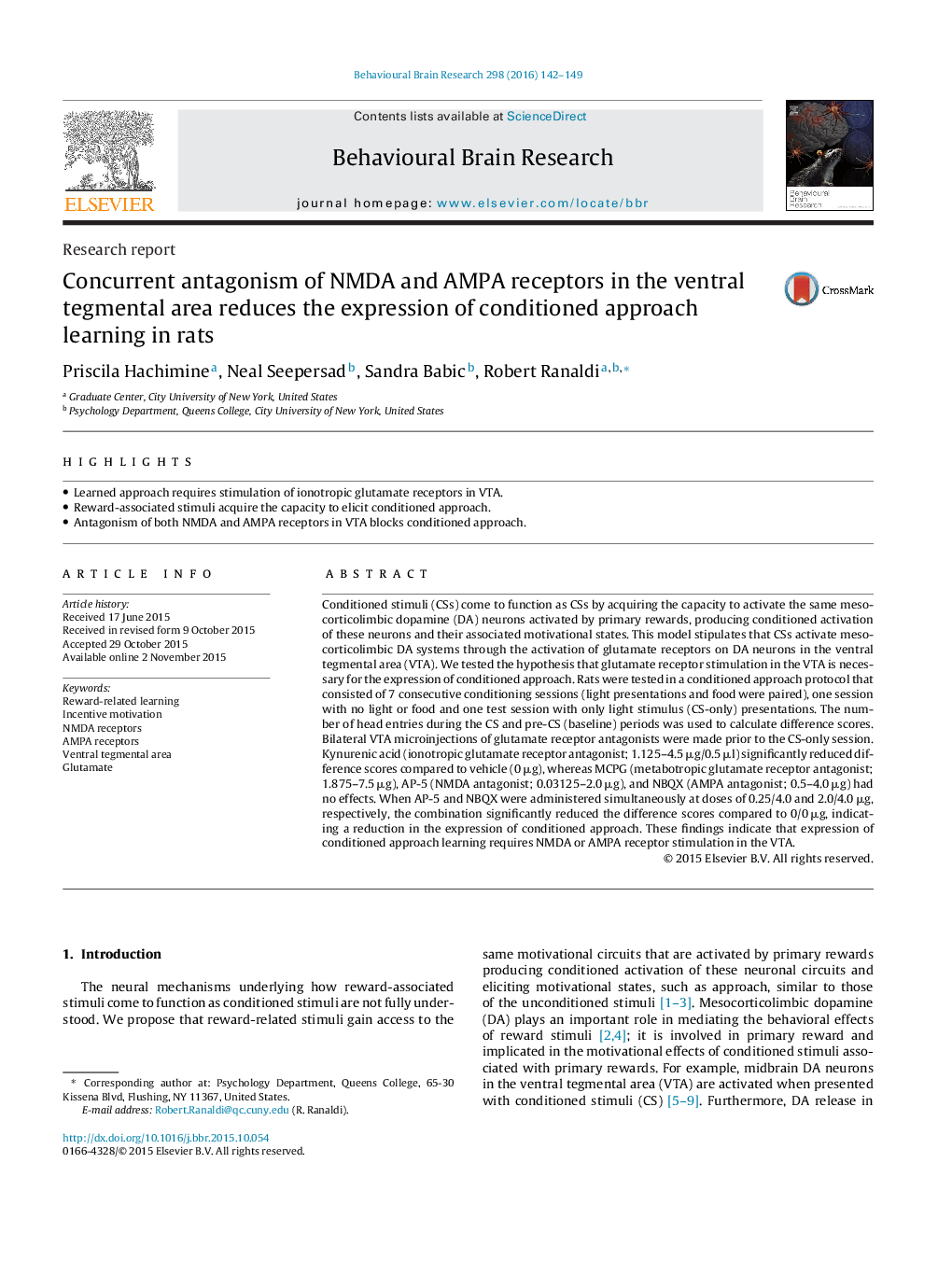| کد مقاله | کد نشریه | سال انتشار | مقاله انگلیسی | نسخه تمام متن |
|---|---|---|---|---|
| 6256279 | 1289914 | 2016 | 8 صفحه PDF | دانلود رایگان |

- Learned approach requires stimulation of ionotropic glutamate receptors in VTA.
- Reward-associated stimuli acquire the capacity to elicit conditioned approach.
- Antagonism of both NMDA and AMPA receptors in VTA blocks conditioned approach.
Conditioned stimuli (CSs) come to function as CSs by acquiring the capacity to activate the same mesocorticolimbic dopamine (DA) neurons activated by primary rewards, producing conditioned activation of these neurons and their associated motivational states. This model stipulates that CSs activate mesocorticolimbic DA systems through the activation of glutamate receptors on DA neurons in the ventral tegmental area (VTA). We tested the hypothesis that glutamate receptor stimulation in the VTA is necessary for the expression of conditioned approach. Rats were tested in a conditioned approach protocol that consisted of 7 consecutive conditioning sessions (light presentations and food were paired), one session with no light or food and one test session with only light stimulus (CS-only) presentations. The number of head entries during the CS and pre-CS (baseline) periods was used to calculate difference scores. Bilateral VTA microinjections of glutamate receptor antagonists were made prior to the CS-only session. Kynurenic acid (ionotropic glutamate receptor antagonist; 1.125-4.5 μg/0.5 μl) significantly reduced difference scores compared to vehicle (0 μg), whereas MCPG (metabotropic glutamate receptor antagonist; 1.875-7.5 μg), AP-5 (NMDA antagonist; 0.03125-2.0 μg), and NBQX (AMPA antagonist; 0.5-4.0 μg) had no effects. When AP-5 and NBQX were administered simultaneously at doses of 0.25/4.0 and 2.0/4.0 μg, respectively, the combination significantly reduced the difference scores compared to 0/0 μg, indicating a reduction in the expression of conditioned approach. These findings indicate that expression of conditioned approach learning requires NMDA or AMPA receptor stimulation in the VTA.
Journal: Behavioural Brain Research - Volume 298, Part B, 1 February 2016, Pages 142-149